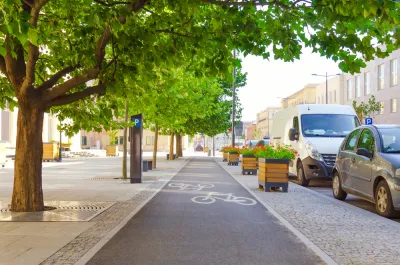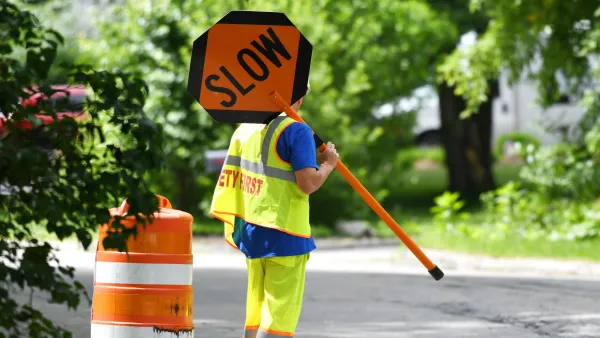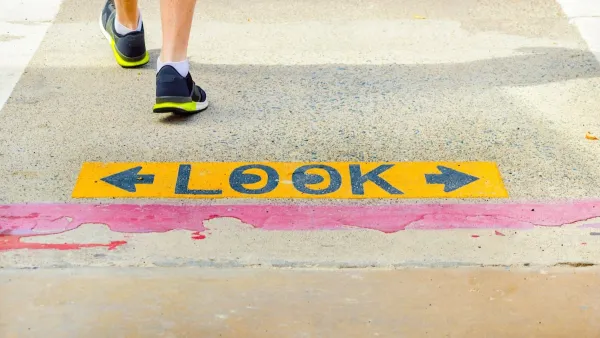A bill named in honor of a U.S. diplomat killed while on her bicycle would let state DOTs access full federal funding for road safety projects.

A federal list of road design elements called “proven safety countermeasures” could hold the key to improved road safety, says former Federal Highway Administration Administrator Shailen Bhatt.
As Kea Wilson explains in Streetsblog USA, “these measures offer safety benefits that have been meticulously proven and quantified by U.S. DOT itself, in the hyper-specific contexts in which traffic engineers might use them — a far higher and more important bar to clear in the bureaucratic world of state DOTs.”
Currently, state DOTs must offer a 10 percent match to receive federal funding for safety projects, meaning they’re often deprioritized in states with low resources. A proposed bill, the Sarah Debbink Langenkamp Act, would allow state DOTs to use 100 percent federal money for safety measures, eliminating the 10 percent local match. “Even as America enters an uncertain new era, supporters of the Langenkamp bill say strategies like protected bike lanes are becoming increasingly normalized in the minds of American transportation officials, thanks in no small part to their status as a proven safety countermeasures.”
According to Wilson, “Increasing state control over how communities make their roads safer is a message that advocates hope a GOP-held Congress can get behind — especially since the bill wouldn't touch a separate federal law that prohibits states from spending more than 10 percent of their total safety money on projects for which the federal government is paying 100 percent of the cost.”
FULL STORY: One Hidden Reason Why Your State DOT Isn’t Building Protected Bike Lanes

National Parks Layoffs Will Cause Communities to Lose Billions
Thousands of essential park workers were laid off this week, just before the busy spring break season.

Retro-silient?: America’s First “Eco-burb,” The Woodlands Turns 50
A master-planned community north of Houston offers lessons on green infrastructure and resilient design, but falls short of its founder’s lofty affordability and walkability goals.

Delivering for America Plan Will Downgrade Mail Service in at Least 49.5 Percent of Zip Codes
Republican and Democrat lawmakers criticize the plan for its disproportionate negative impact on rural communities.

Test News Post 1
This is a summary

Test News Headline 46
Test for the image on the front page.

Balancing Bombs and Butterflies: How the National Guard Protects a Rare Species
The National Guard at Fort Indiantown Gap uses GIS technology and land management strategies to balance military training with conservation efforts, ensuring the survival of the rare eastern regal fritillary butterfly.
Urban Design for Planners 1: Software Tools
This six-course series explores essential urban design concepts using open source software and equips planners with the tools they need to participate fully in the urban design process.
Planning for Universal Design
Learn the tools for implementing Universal Design in planning regulations.
EMC Planning Group, Inc.
Planetizen
Planetizen
Mpact (formerly Rail~Volution)
Great Falls Development Authority, Inc.
HUDs Office of Policy Development and Research
NYU Wagner Graduate School of Public Service





























